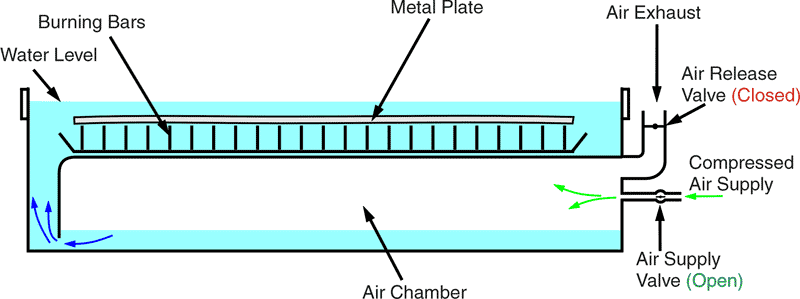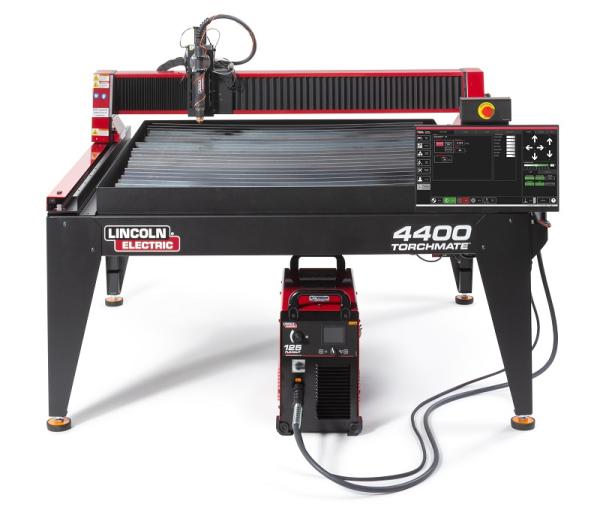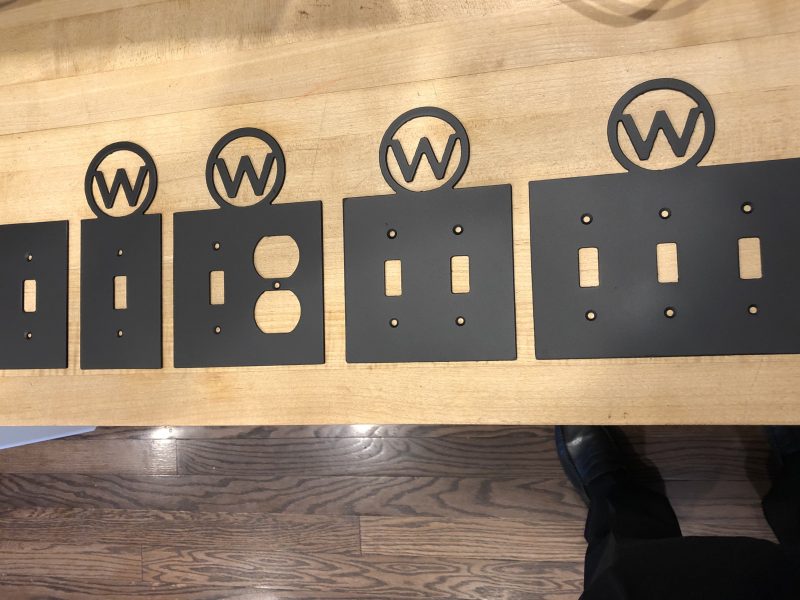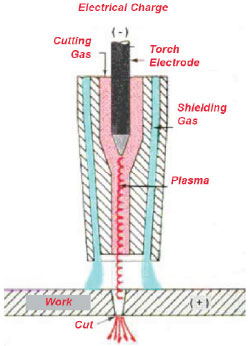Table of Contents
Are you looking to purchase a CNC plasma water bed but not sure how deep it should be? The depth of the bed is a crucial factor that determines the quality of your cutting results. In this article, we will explore the different factors that determine the ideal depth for a CNC plasma water bed, so you can make an informed decision when choosing the right equipment for your business.
From the thickness of the materials you plan to cut to the size of your machine, there are many variables to consider when determining the optimal depth for your CNC plasma water bed. We will delve into the technical details of each factor, and provide practical tips to help you choose the right depth for your needs. Whether you’re a seasoned operator or a beginner, this article will equip you with the knowledge you need to select the perfect CNC plasma water bed for your business.
When it comes to a CNC plasma water bed, the depth should be at least 6 inches. This depth allows for enough water to cool the metal effectively while also providing a stable surface for the plasma cutter. Keep in mind that deeper water beds may require more maintenance and can be more difficult to clean. It’s also important to ensure that the water level is always above the metal being cut to prevent damage to the plasma cutter.
How Deep for a CNC Plasma Water Bed?
CNC plasma cutting has become a popular method for cutting through various metals. One of the key components of a CNC plasma cutting machine is the water bed that supports the metal during the cutting process. The depth of the water bed is an important factor to consider when setting up your CNC plasma cutting machine. In this article, we will discuss the ideal depth for a CNC plasma water bed and why it is important.
What is a CNC Plasma Water Bed?
A CNC plasma water bed is a table that holds the metal being cut during the CNC plasma cutting process. The water bed is filled with water, and the metal rests on top of the water. The water provides a stable surface for the metal to rest on while also helping to control the heat generated during the cutting process.
Benefits of a CNC Plasma Water Bed
There are several benefits to using a water bed for CNC plasma cutting. First, the water helps to reduce the heat generated during the cutting process, which can extend the life of the cutting nozzle. Second, the water acts as a lubricant, which can reduce the amount of slag that is produced during the cutting process. Finally, the water helps to reduce the amount of dust and debris that is produced during the cutting process, which can make the working environment cleaner.
The Ideal Depth for a CNC Plasma Water Bed
The ideal depth for a CNC plasma water bed is typically between 2 and 4 inches. The depth of the water bed will depend on several factors, including the thickness of the metal being cut, the size of the cutting nozzle, and the type of plasma cutting machine being used.
Factors to Consider when Determining the Depth of the Water Bed
When determining the depth of the water bed, there are several factors to consider. These include:
- The thickness of the metal being cut
- The size of the cutting nozzle
- The type of plasma cutting machine being used
- The cutting speed
Thickness of the Metal Being Cut
The thickness of the metal being cut is one of the most important factors to consider when determining the depth of the water bed. Thicker materials require a deeper water bed to ensure that the metal is properly supported during the cutting process.
Benefits of Cutting Thicker Materials with a Deeper Water Bed
Cutting thicker materials with a deeper water bed can help to reduce the amount of heat generated during the cutting process. This can help to extend the life of the cutting nozzle and reduce the amount of slag that is produced during the cutting process.
Disadvantages of Cutting Thicker Materials with a Deeper Water Bed
One of the disadvantages of cutting thicker materials with a deeper water bed is that it can increase the amount of dust and debris that is produced during the cutting process.
Size of the Cutting Nozzle
The size of the cutting nozzle is another important factor to consider when determining the depth of the water bed. Larger cutting nozzles require a deeper water bed to ensure that the metal is properly supported during the cutting process.
Benefits of Using a Larger Cutting Nozzle with a Deeper Water Bed
Using a larger cutting nozzle with a deeper water bed can help to increase the cutting speed and reduce the amount of slag that is produced during the cutting process.
Disadvantages of Using a Larger Cutting Nozzle with a Deeper Water Bed
One of the disadvantages of using a larger cutting nozzle with a deeper water bed is that it can increase the amount of dust and debris that is produced during the cutting process.
Type of Plasma Cutting Machine Being Used
The type of plasma cutting machine being used is also an important factor to consider when determining the depth of the water bed. Different types of plasma cutting machines require different depths of water beds to ensure that the metal is properly supported during the cutting process.
Benefits of Using a Certain Type of Plasma Cutting Machine with a Deeper Water Bed
Using a plasma cutting machine that is designed to work with a deeper water bed can help to increase the cutting speed and reduce the amount of slag that is produced during the cutting process.
Disadvantages of Using a Certain Type of Plasma Cutting Machine with a Deeper Water Bed
One of the disadvantages of using a plasma cutting machine that is designed to work with a deeper water bed is that it can increase the amount of dust and debris that is produced during the cutting process.
Cutting Speed
The cutting speed is another factor to consider when determining the depth of the water bed. Faster cutting speeds require a deeper water bed to ensure that the metal is properly supported during the cutting process.
Benefits of Increasing Cutting Speed with a Deeper Water Bed
Increasing the cutting speed with a deeper water bed can help to increase productivity and reduce the amount of time required to complete a project.
Disadvantages of Increasing Cutting Speed with a Deeper Water Bed
One of the disadvantages of increasing the cutting speed with a deeper water bed is that it can increase the amount of dust and debris that is produced during the cutting process.
Conclusion
In conclusion, the depth of the water bed is an important factor to consider when setting up your CNC plasma cutting machine. The ideal depth for a CNC plasma water bed is typically between 2 and 4 inches, but this will depend on several factors, including the thickness of the metal being cut, the size of the cutting nozzle, and the type of plasma cutting machine being used. By taking these factors into consideration, you can ensure that your CNC plasma cutting machine is set up for success.
Frequently Asked Questions
Here are some common questions people ask about the depth of a CNC plasma water bed.
What is the optimal depth for a CNC plasma water bed?
The optimal depth for a CNC plasma water bed is around 6 inches. This depth is sufficient to prevent any warping or distortion of the bed due to the heat generated by the plasma cutter. It also helps in reducing the noise generated during the cutting process.
However, the depth can vary depending on the size and power of the plasma cutter. In general, a larger and more powerful plasma cutter will require a deeper water bed to dissipate the heat generated during the cutting process.
Can a shallower water bed be used for a smaller plasma cutter?
Yes, a shallower water bed can be used for a smaller plasma cutter. However, it is important to ensure that the depth is sufficient to prevent any warping or distortion of the bed. A depth of at least 4 inches is recommended for smaller plasma cutters.
It is also important to note that a shallower water bed may result in more noise during the cutting process. Additionally, a shallower water bed may require more frequent changes of the water to maintain its effectiveness in dissipating the heat generated by the plasma cutter.
What are the consequences of using a water bed that is too shallow?
Using a water bed that is too shallow can result in warping or distortion of the bed due to the heat generated by the plasma cutter. This can lead to inaccuracies in the cutting process and can also damage the plasma cutter.
Additionally, a shallow water bed may not be effective in dissipating the heat generated by the plasma cutter, which can result in a shorter lifespan for the consumables and may also increase the noise generated during the cutting process.
How often should the water in the bed be changed?
The frequency of changing the water in the bed depends on various factors, such as the size and power of the plasma cutter and the depth of the water bed. In general, the water should be changed after every 8-10 hours of cutting or when the water becomes visibly dirty or murky.
It is important to use clean water to maintain the effectiveness of the water bed in dissipating the heat generated by the plasma cutter. Additionally, adding a rust inhibitor or biocide to the water can help in preventing rust and bacterial growth.
What are some tips for maintaining the water bed?
Some tips for maintaining the water bed include regularly checking the water level and adding more water as needed, cleaning the bed and the water pump regularly, and using a filter to remove any debris or impurities from the water.
Additionally, it is recommended to use distilled or deionized water to prevent the buildup of minerals and other impurities that can reduce the effectiveness of the water bed. Using a cover to protect the water bed from debris and dust can also help in maintaining its effectiveness.
In conclusion, the depth of a CNC plasma water bed is an important factor to consider when choosing a machine for your cutting needs. While there are no hard and fast rules about what depth is best, it’s generally recommended to have a water depth of at least 2 inches. This provides adequate protection for your machine and ensures that your cuts are clean and precise.
Furthermore, it’s important to consider the type of material you’ll be cutting and the thickness of the material. For thinner materials, a shallower water bed may be sufficient, while thicker materials may require a deeper bed. It’s always a good idea to consult with a professional to determine the best depth for your specific needs.
Lastly, maintaining the proper water level and cleanliness of your water bed is crucial for the longevity and effectiveness of your CNC plasma machine. Regular cleaning and monitoring of the water level will ensure that your machine is operating at its best and producing high-quality cuts. With these considerations in mind, you’ll be well on your way to choosing the perfect CNC plasma water bed for your cutting needs.
Request a quote today!
[contact-form-7 id="1578" title="Contact form"]
Please compress the file into a ZIP or RAR file before uploading. Alternatively, send through your RFQ by email.
enquires@unitymanufacture.com





